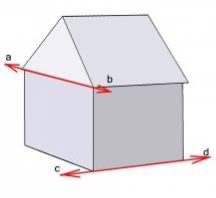Step 1: “Decode” the language
Like many specialized fields, mathematics has its own language. Many math terms have a definition that is different from that of the same word in everyday, non-math speech. Therefore, it is important to know the vocabulary of mathematics and use it correctly so that you can communicate clearly when writing and speaking about mathematics. When you do this, your ability to make sense of the math and remember what you have learned will improve.
When you see a math term you do not understand:
- Look up the definition. We recommend visiting mathwords or mathisfun.
 Make a glossary. We recommend creating a separate section in your notebook for quick reference. Include definitions, pictures, diagrams, and graphs. Try explaining information using your own words.
Make a glossary. We recommend creating a separate section in your notebook for quick reference. Include definitions, pictures, diagrams, and graphs. Try explaining information using your own words.
- Example: Skew Lines – Lines that do not intersect and are not parallel.
Step 2: Develop a “Game Plan”
Before each class:
- Review procedures and concepts in notes from previous class.
- Look at new topic headings and associated examples in the textbook for the coming class.
- Make a note of any questions you may have on the new topics. Ask those questions in class!
After each class (as soon as possible):
- Rewrite your notes in an orderly fashion in your own words. Your notes should have a logical flow that you or someone else can follow with ease.
- Circle terms/concepts and add them to your glossary.
- Question mark areas of your lecture notes or homework you do not completely understand. Seek clarity:
- Reread relevant areas of your textbook or find resources online. We recommend Khan Academy and mathispower4u.
- Ask a classmate, attend office hours, use a study group, or get a tutor.
- Supplement your understanding with video. Listening to someone else’s explanation may clarify confusion better than static-image solutions to sample problems. Being able to see and hear another person problem-solve may be more meaningful.
Step 3: Practice – Math is NOT a spectator sport!
“The only way to learn mathematics is to do mathematics.” – Paul R. Halmos
Building math knowledge and skills stems from daily practice.
When to practice:
- We recommend practicing at least 1 hour daily at a time you have the energy to focus (solving problems, simplifying expressions, writing proofs, etc.). Don’t wait until the weekend.
How to practice:
- Questions to ask yourself:
- “What were the big ideas discussed during today’s lecture?”
- “How can I summarize today’s lecture in my own words?”
- “What ideas does the following HW problem teach me?”
- “How are the ideas in this problem connected to what I already know?
- “I just solved a problem. What information will I use for similar problems moving forward?”
- After solving a problem:
- Check your answer
- Carefully organize and rewrite the steps taken to reach the answer. List each step one underneath each other. Describe what occurred with each step. If a stranger came in the room to read your paper, could they follow the steps you took to reach your answer?
- Explain the purpose of each step. This helps develop a more thorough connection of content.
Why practice this way?
To solidify your understanding of concepts.
- Make it easier to review material at a later date,
- Help others follow your logic useful for partial credit on an exam.
Reduce frustration:
- Control your emotions: Rather than grow angry because “nothing makes sense,” try to identify the exact point of confusion/disconnect.
- Reread the question and identify the end-goal.
- Review your solution steps for procedural or computational errors.
- Compare your solution steps with those of sample problems shown in your class notes, textbook, or online. How do they compare?
- Troubleshoot with a classmate. Did he or she experience a similar issue?
- Troubleshoot with your professor during his or her office hours.
- Take scheduled breaks. We recommend a 10-minute break after working for 45-50 minutes. Working without a break for hours leads to mental burnout and a greater occurrence of mistakes.
- If possible, finish on a high note. Take a break after a problem that you were able to complete.
Step 4: Retain, Retain, Retain!
- Work well in advance of an exam. Allow yourself time to learn.
- During homework sessions, practice retrieval.
- Select a few problems from previous home works or class work.
- Try to solve them without looking at notes.
- Check work with your notes
- Anything wrong or missing is what you still need to work on and remember.
- When you think you know all of the material take old practice exams, or make and take one of your own.
- Identify the problem types on the exam using class notes, text, homework, review handouts.
- Find unassigned homework problems for each type.
- Work through these problems in the time allotted for the exam.
- Check your work with examples in your notes, text, or on the web.
- Identify what to work on more.
- Review the math you know right before bedtime.